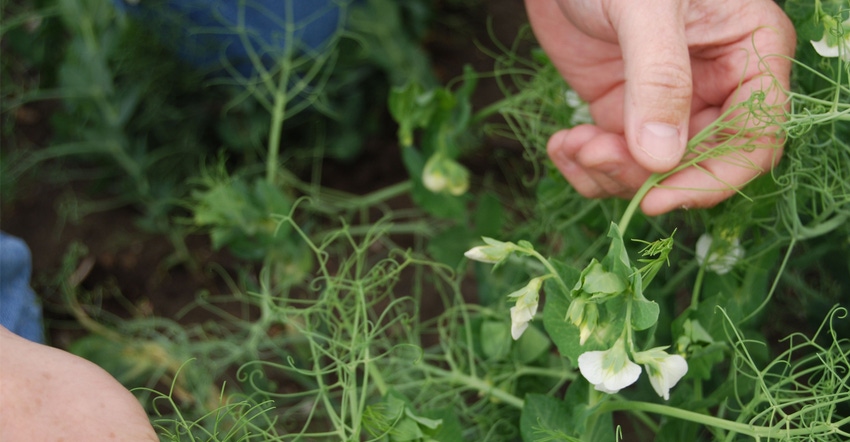
For the last four years, yellow field peas have enjoyed an increase in acres in Nebraska, with an estimated 100,000 acres planted in 2017. In the last several years, the state has added six new field pea processors, including locations in Hastings, Venango and Bridgeport.
Growing yellow peas in plots in western and central Nebraska, Strahinja Stepanovic, University of Nebraska Extension cropping systems educator in Chase County, notes a new plot is being added this spring at the Eastern Nebraska Research and Extension Center near Mead.
“We’re finding out that peas have a place throughout the whole state. In the West, they’re replacing fallow. And as you get into higher rainfall and a more intensive rotation in central Nebraska, some are replacing soybeans with peas, and getting a lot better yield than we are in the west,” Stepanovic says. “In central Nebraska, they have a better climate and more time to replenish the profile. They’re finding in some cases that wheat yields better after peas than it does soybeans.”
Stepanovic says from 25 to 30 varieties of various pulse crops will grow on a 3-acre plot at ENREC — including not only yellow peas, but green peas, chickpeas and lentils as well.
“We’re expanding to all other alternatives. Field peas are just the tip of the iceberg. We want to grow what the market demands,” he says.
Stepanovic says the field peas will be double-cropped with short-season soybeans, short-season corn and grain sorghum, as well as forage crops and cover crops. With the expanded rotation, he hopes to determine how much weed suppression can be gained from pulse crops, and if growers can expect to cut herbicide costs in-season. There will also be comparisons between tillage and no-till, as well as strips for fungicide applications. He also hopes to identify potential disease issues for pulses in eastern Nebraska.
“If you’re going to double-crop, you have to be careful. If they get rain at the end of July, sometimes pulses put on more green, flowers and pods. We need to plan on desiccation to get them to maturity,” he says. “Seed treatments, fungicide applications and also desiccation are important if we want to double-crop. I don’t think we’ll have a lot of weed problems, just because we’re expanding from a corn-soybean system. We may leave a strip where we don’t apply herbicide at all to see how they compete with weeds.”
This is also the first year UNL is growing winter peas in a plot trial. These peas were planted in September at the Henry Stumpf International Wheat Center near Grant, but Stepanovic notes it isn’t easy to find winter pea varieties grown in the U.S.
“I’ve got a germplasm from Europe I’m trying here. They have more advanced breeding programs than we have. I’m hoping we can move the flowering date two weeks earlier compared to spring-planted peas so we’re not hit with hot temperatures in summer,” Stepanovic says. “Timely harvest of peas is important. If we can get to maturity earlier and have a timely harvest, our peas should have less harvest loss, better seed quality. And then we can go back into wheat after we’re done harvesting peas.”
At the moment, Stepanovic says no pea processors are located in Nebraska east of Hastings. However, with the research at ENREC and rising interest in peas in eastern Nebraska, he is hopeful markets will follow.
“I’m predicting in the next three to four years, you’ll see at least two to three certified dealers show up growing seed, and then maybe one processor. I’m sure as we increase interest in acres, those things will come,” he says. “This is a bottom-up recipe. With specialty crops, if you don’t go from the bottom up, nothing is going to happen. If we have a good program and don’t get hailed on, with a little luck we can do some real good.”
About the Author(s)
You May Also Like






